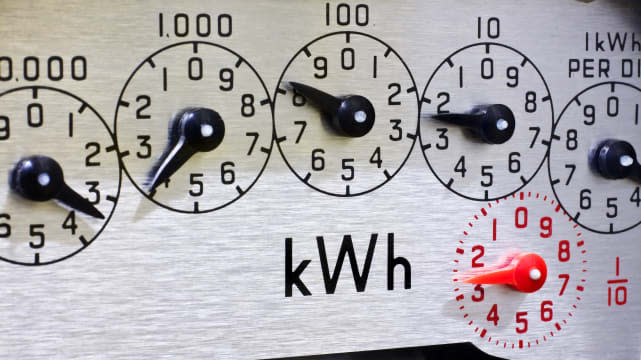Save a few bucks by turning your Mac off or letting it sleep

When it comes to saving energy, I think I do pretty well. My wife and I both drive high-MPG vehicles, we keep our thermostat at a relatively chilly 62°F during the daytime hours in winter, and we don't have air conditioning in our home. We shut off lights when they're not needed, and all of our appliances are Energy Star certified. But one thing I usually don't do is shut my late 2012 27-inch iMac off at night or let it go into sleep mode.
While doing a self-audit of energy usage in preparation for a possible installation of photovoltaic solar panels at our house, I thought it would be useful to determine whether or not turning my big-screen iMac off when I'm not using it would save a lot of energy and money. The short answer? It doesn't save enough to make it worthwhile, although if you're out to save the world, turning your Mac off or letting it drift off into sleep mode can ease your conscience.
To give you an idea of my current weekday usage, I work about 8 hours per day with the iMac display blasting away, and the other 16 hours of the day the iMac is usually in "idle mode" with the display off. That's not sleep mode -- basically I just have my display set to shut off after 15 minutes of non-use, and the device never sleeps. Why? Well, I have processes that go off at odd times of the night, and I sometimes like to use Parallels Access to control my iMac from my iPad. On weekends, I try to stay away from the iMac as much as possible, so I'd say I average about 2 hours of use per day with 22 hours per day in idle mode with the display turned off.
Determining the energy usage of your Apple device is actually quite simple. Go to Apple's Environmental Responsibility Report page, and you can see the energy diet of every Apple hardware product made back to 2008. Going to the 2012 list, I found that the 27-inch iMac uses 79.8 W of power when it's actively in use, 20.6 W when it's in that "idle mode with display off", 1.03 watts when in sleep mode and .22 W when turned off.
Some quick calculations (hours of usage x power usage in Watts / 1000 = energy usage in kWh) showed my total annual energy usage for the iMac to be about 315.4 kWh (kilowatt-hours). Looking at my electrical usage and cost for the past year courtesy of my local electric and gas utility, I was able to determine that I'm being charged about $0.11 per kWh. That iMac that I use for the majority of my work costs me about $34.69 a year to operate.
My next calculation was to determine how much energy I'd use if I set the Energy Saver system preference to shut the device down for 9 hours every day when I know I'm not going to use the iMac. In that mode, the iMac would use about 248.7 kWh of energy, or about $27.36 per year. That means that shutting that machine off at night would save about $7.33 per year -- and I waste more than that sometimes in a single app purchase!
My last calculation determined how much I'd save if I just set the iMac to sleep when I'm not using it, so basically it's running for about 8 hours and sleeping for 16 hours on weekdays, or running for 2 hours and sleeping for 22 on weekends. In that situation, the iMac uses about 185.1 kWh every year and my annual savings would be about $14.33.
Still, that's not all that great. My reticence towards using sleep mode on this computer was based on past experiences where "waking up" just took too damned long, but this iMac jumps back from sleep mode very quickly. While that monetary savings of $14.33 might not be huge, every little kilowatt-hour I can save is indeed money in my pocket. Just think -- I might be able to buy two Starbucks beverages or almost pay for a Lightning to USB cable from the local Apple Store.
How about you, readers? Do you shut 'em down every night, let them sleep, or just have the display go dark when you're not using your favorite Mac? Let us know in the comments.

